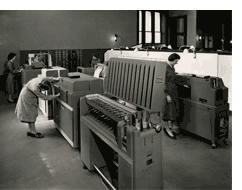Go paper-free
Amend paper-free preferences for your statements and correspondence.
In April 1963, Bank of Scotland launched its first fleet of mobile banks. These served rural communities in the Bathgate and Haddington areas.
The mobile banks were well received. Over the course of the following year, the Bank extended the service to north-west Scotland and the Isle of Skye. A floating bank was also introduced around this time, to serve the outlying districts of the Orkney Islands.

'Scotcash', a forerunner of the ATM or cash machine, was introduced by Bank of Scotland in 1968. These machines operated 24 hours a day allowing customers to withdraw cash even when their branch was closed.
Customers were given personal code numbers to activate the machines, similar to the modern PIN. They were also supplied with £10 vouchers. These were fed into the machine, and the corresponding amount later debited from the customer's account. Any sum in multiples of £10 could be withdrawn. The machines proved popular, and by the end of 1971, there were 26 in operation across Scotland.
The revolutionary Home and Office Banking Service (HOBS) was launched by Bank of Scotland in 1985. It was the UK’s first electronic home banking service.
Long before the internet was widely available, Bank of Scotland customers could actively manage their accounts from the comfort of their own sitting room. All they needed was a TV screen and telephone link-up.
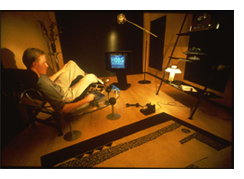
In 2001, Bank of Scotland merged with the Halifax bank to form HBOS plc. On 19th January 2009, HBOS plc was acquired by Lloyds TSB and the new entity was named Lloyds Banking Group plc.
Its registered office, and Scottish headquarters, is the historic Bank of Scotland building on The Mound, Edinburgh.
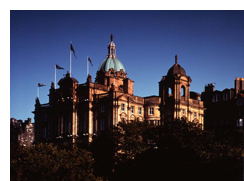
The new £5 polymer note launched in October 2016. The note proudly features Sir Walter Scott and is more durable, more secure and stays cleaner than paper notes.
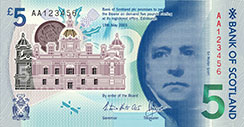
Like it when your money lasts a bit longer? We do too! That’s just one of the benefits of our new polymer £10 note, which launches in October following the launch of our first polymer £5 note in 2016. The note features the famous Glenfinnan Viaduct, as well as Sir Walter Scott. Find out more about the new £10 polymer notes.
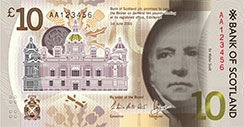
Bank of Scotland was founded by an Act of the Scottish Parliament on 17 July 1695. It is Scotland's first and oldest bank and one of the first in the UK.
The original 172 shareholders came mainly from Scotland's political and merchant elite. They required a banking system which would offer long-term credit and security for merchants and landowners alike.
In 1696, Bank of Scotland became the first bank in Europe to successfully issue paper currency. The Bank's right to issue notes has been maintained to the present day.
The first branches were opened in Dumfries and Kelso in 1774 and by 1795 there were 27 branches. By 1860 this had risen to 43 branches and by 1939 there were 265 branches.
In 1853, Bank of Scotland became one of the first Scottish banks to use the new electric telegraph service. Introduced in the 1840s, the telegraph was the 19th century equivalent of e-mail, providing instant communication for the first time.
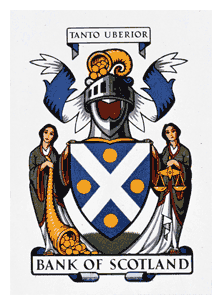
In 1959, Bank of Scotland became the first UK bank to introduce a computer for processing its accounts centrally. Computers were to revolutionise the banking industry and again Bank of Scotland was at the forefront.
The Bank's Centralised Accounting Unit initially served just four branches. It took a decade to transfer all customer accounts onto the system. The arrival of the first computer was a source of great excitement. Several branch managers were taken to see it at the George Street office in Edinburgh. Only a few were allowed in at a time, for fear their body heat would cause the machine to malfunction.
